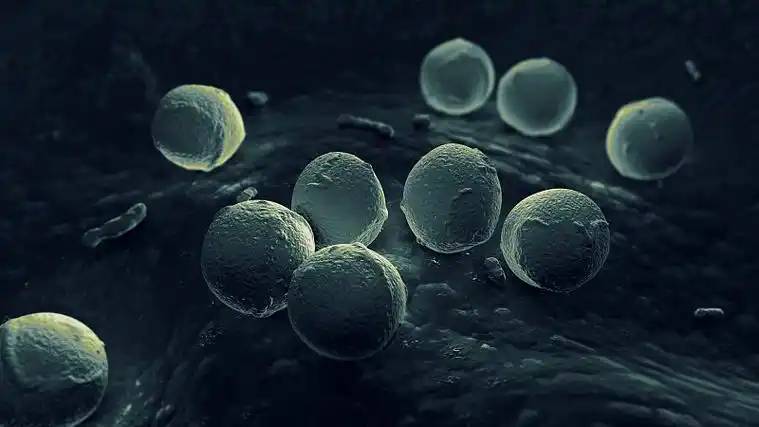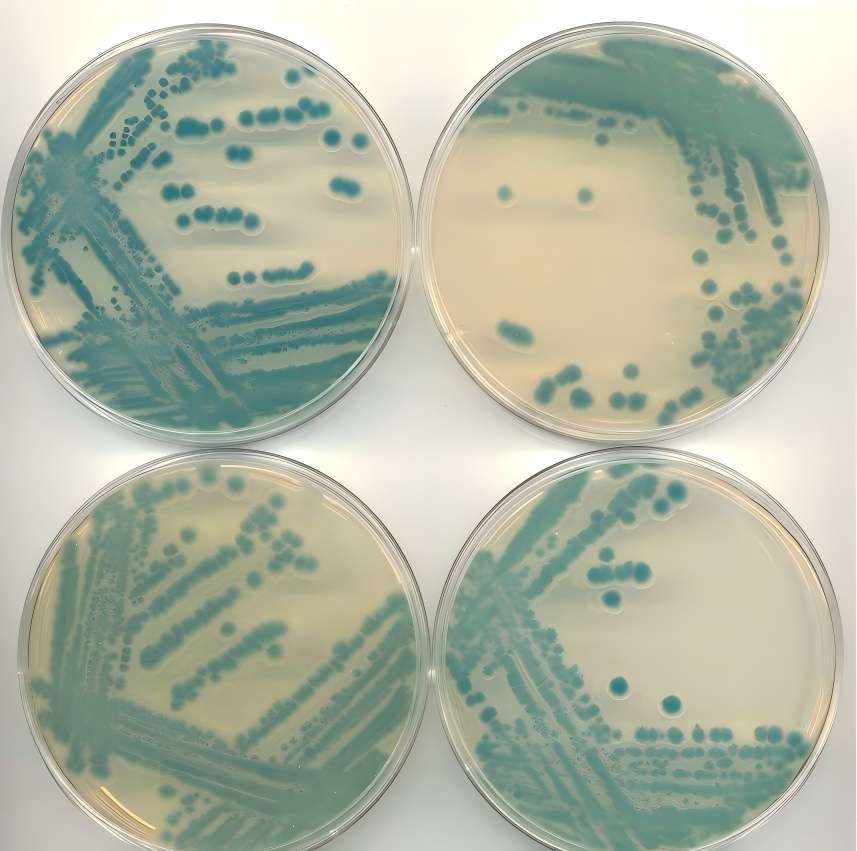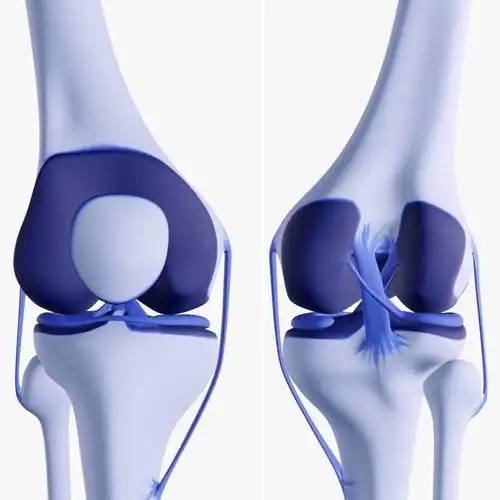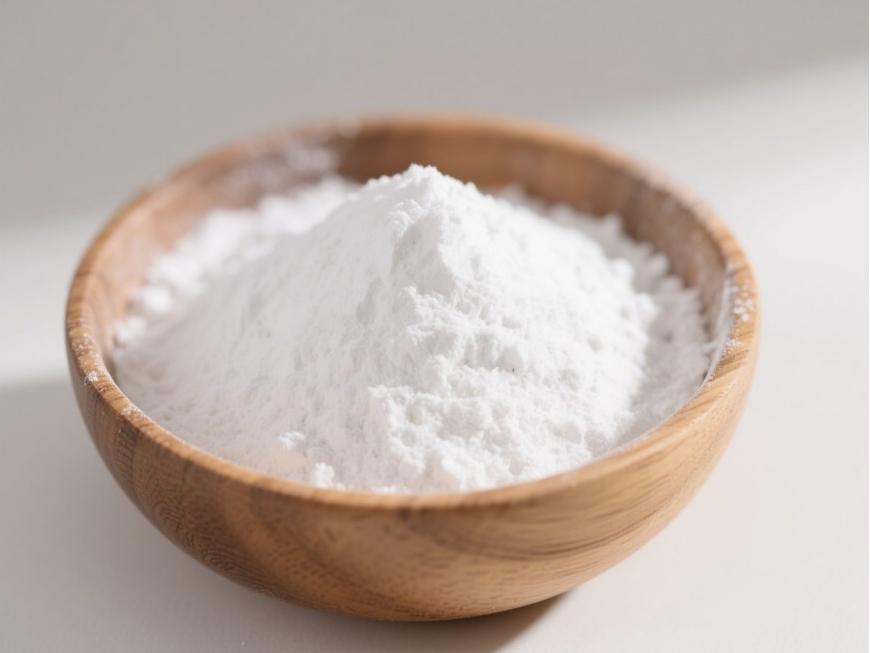Hyaluronic Acid: A Multifunctional Natural Ingredient to Boost Your Product Innovation
Гиалуроновая кислота(HA), also known as hyaluronan, is a naturally occurring high-molecular-weight polysaccharide composed of glucuronic acid and N-acetylglucosamine units linked by alternating β-1,3and β-1,4 glycosidic bonds, forming a regular and stable linear structure- да- да- да- да.
As an important component of the extracellular matrix, hyaluronic acid is widely distributed in the dermis and epidermis of the skin, joint synovial fluid, and intercellular spaces, with particularly high concentrations in the skin, exceeding 50%. Its molecules possess exceptional hydrophilic properties, enabling them to absorb large amounts of water, and exhibit excellent viscoelasticity and biocompatibility.
Due to its excellent moisturising, lubricating, and film-forming properties, hyaluronic acid has become a highly sought-after functional ingredient in cosmetics, skincare products, oral care, health supplements, and biomaterials, commonly used to enhance product hydration, repair, and skin feel.
Green Spring Technology employs advanced biotechnology to specialise in the production of high-purity hyaluronic acid powder. Our hyaluronic acid raw materials feature high purity, excellent stability, and strong compatibility, effectively enhancing the moisturising properties, skin feel, and overall performance of end products, helping your formulations achieve optimal results.
Green Spring Technology is committed to providing customers with high-quality hyaluronic acid raw materials that are consistent in quality and reliable in supply. We are your trusted long-term partner. Please contact us to request samples and detailed technical information, and we will provide you with professional raw material solutions.
1 Properties of Hyaluronic Acid
Hyaluronic acid (HA) forms a flexible, coiled structure in aqueous solutions, with a diameter of up to 500 nm. Each disaccharide unit in its molecular chain contains a carboxyl group, which dissociates into an anion under physiological conditions. Due to electrostatic repulsion, the molecules fully extend and occupy a large volume, conferring exceptional water-binding capacity—able to absorb over 1,000 times its own weight in water.
The molecular weight (Mr) of hyaluronic acid typically ranges from 8 × 10⁵ to 5 × 10⁶. High-Mr products are more likely to form continuous network structures, while low-Mr hyaluronic acid often forms only localized fragmentary networks. Its molecules can form helical structures through hydrogen bonding and further assemble into double helices and three-dimensional network aggregates as concentration increases.
Hyaluronic acid solutions exhibit significant high viscosity characteristics at high Mr or high concentrations. Once the system viscosity exceeds 10 mPa·s, molecular chain entanglement intensifies, causing viscosity to rise rapidly, thereby imparting excellent thickening and spatial support properties to the product.
Предложения технологий «зеленый источник»high-purity hyaluronic acid raw materials in various molecular weight grades, suitable for cosmetics, skincare, and biomaterials, meeting diverse product requirements for texture and performance.
2 Hyaluronic Acid Powder Production Technology
The production technology for hyaluronic acid (HA) powder primarily includes three routes: extraction, microbial fermentation, and artificial synthesis.
The extraction method, which was adopted early on, primarily involves separating and extracting HA from tissues such as chicken combs, human umbilical cords, and animal eyeballs. This process is complex, has a low extraction rate (approximately 1%), and is limited by raw material sources, resulting in high production costs.Additionally, hyaluronic acid in tissues is often tightly bound to other large molecules, making purification difficult and posing potential biosafety risks, thereby limiting its application in pharmaceuticals and cosmetics.
Artificial synthesis is currently in the laboratory research stage and has not yet achieved large-scale production. The process involves synthesising specific derivatives followed by enzymatic treatment and purification steps, with low technical maturity and significant gaps before industrial application.
В настоящее времяmicrobial fermentation has become the mainstream technology for hyaluronic acid production. This method involves screening superior strains, efficiently synthesising hyaluronic acid in a fermentation system, and obtaining high-purity products through advanced separation and purification processes. It offers significant advantages, including readily available raw materials, controllable processes, high product consistency, and scalability, making it widely applied in cosmetics, skincare products, and biomaterials.
Green Spring Technology leverages its mature microbial fermentation technology and precise purification processes to provide customers with high-purity hyaluronic acid powders in various specifications, ensuring safe, stable, and reliable raw material supply.
2.1 Fermentation-based Production of Hyaluronic Acid Raw Materials
2.1.1 Selection and Cultivation of Hyaluronic Acid-Producing Microorganisms
The microbial fermentation production of hyaluronic acid (HA) relies on high-performance microbial strains. Since the discovery of Streptococcus pyogenes as a HA-producing bacterium in 1937, researchers have also confirmed this capability in strains such as Streptococcus equi and Streptococcus equi recursus.
However, wild-type Streptococcus species exhibit issues such as complex enzyme production, low target product yields, and high byproduct levels, making them unsuitable for industrial-scale efficient and stable production. Therefore, strain improvement has become a critical step in enhancing hyaluronic acid yield and quality.
In breeding practices, physical or chemical mutagenesis methods such as ultraviolet radiation, 60Co γ-rays, and nitrosourea (NTG) are commonly used to treat original strains. Through mutagenesis, industrial strains with superior traits such as high production rates, high molecular weights, low depolymerase activity, and no haemolytic properties can be obtained, laying the foundation for large-scale production of high-quality hyaluronic acid.
Green Spring Technology has continuously invested in strain selection and process development, successfully constructing multiple high-efficiency, safe hyaluronic acid production strains through advanced mutagenesis and screening technologies. This effort effectively supports the stable supply of high-purity hyaluronic acid with different molecular weight grades.

2.1.2 Hyaluronic Acid Strain Breeding
The efficient production of hyaluronic acid (HA) relies on modern strain breeding technologies. Currently, the mainstream methods include protoplast breeding and genetic engineering breeding, which have significantly improved strain yield and product quality.
Protoplast breeding removes the cell wall, making the strain more sensitive to mutagenic treatments. Using NTG or laser treatments, multiple high-yielding and stable production strains have been successfully cultivated.
Genetic engineering breeding achieves targeted optimisation by precisely regulating hyaluronic acid synthesis genes.The key genes hasA and hasB encode hyaluronic acid synthase and UDP-glucose dehydrogenase, respectively. When introduced into engineered bacteria such as Escherichia coli or Lactobacillus, they enable efficient synthesis of hyaluronic acid.
Green Spring Technology has established an advanced gene engineering strain construction and fermentation platform, capable of developing multi-specification, high-quality hyaluronic acid ingredients, and providing the market with a stable and reliable raw material supply.
2.1.3 Hyaluronic Acid Fermentation
The fermentation process is critical to the yield and quality of hyaluronic acid (HA). Green Spring Technology achieves significant improvements in product performance through precise control of fermentation conditions.
We use a scientifically formulated customised medium to provide comprehensive nutrition for strain growth and target product synthesis. During fermentation, key parameters such as pH, temperature, and stirring rate are systematically optimised. Research indicates that at pH 6.7, 37°C, and under optimal stirring conditions, a balanced relationship between microbial growth, HA yield, and molecular weight can be effectively maintained.
Glucose concentration is another critical factor influencing HA molecular weight. Green Spring employs dynamic substrate control technology to stably produce products with molecular weights ranging from 800,000 to 3,000,000 Dalton, meeting diverse application requirements.

3 Applications of Hyaluronic Acid
3.1. Система управления Applications of Hyaluronic Acid in Cosmetics
Hyaluronic acid (HA) has become a highly favoured natural active ingredient in the cosmetics industry due to its exceptional moisturising and skin-soothing properties, earning it the reputation as the ‘ideal natural moisturising factor.’
In cosmetics, hyaluronic acid forms a lightweight, breathable moisturising film on the skin's surface, providing long-lasting hydration with a fresh, non-greasy texture that prevents pore blockage. Its excellent viscoelasticity and lubricity further enhance the product's user experience.
Additionally, hyaluronic acid exhibits excellent skin compatibility and biocompatibility, aiding in the delivery and absorption of nutrients to support skin health.It is also used to help combat the environmental effects of UV rays, enhancing the protective and repairing functions of products.
Currently, hyaluronic acid has become an important functional ingredient in various skincare, cosmetics, and personal care products, with a common addition rate of 0.05%–0.50%, widely used in serums, masks, creams, lotions, and sunscreen products.
Green Spring Technology is committed to providing cosmetic companies with high-purity hyaluronic acid raw materials of multiple molecular weights, helping customers develop safer and more effective skincare solutions.

3.2 Application of Hyaluronic Acid in Health Supplements
Hyaluronic acid (HA), a natural polysaccharide, has excellent water retention and biocompatibility and is increasingly used in oral health supplements. As a functional food ingredient, it has been incorporated into various product formulations, such as tablets, capsules, and oral liquids.
From a nutritional perspective, oral hyaluronic acid provides the essential building blocks for the synthesis of endogenous hyaluronan, helping to maintain moisture and lubrication in tissues such as skin and joints. Currently, an increasing number of health supplement brands are incorporating hyaluronic acid into their formulations to support consumers in hydrating from the inside out and enhancing vitality.
As a reliable supplier of hyaluronic acid raw materials, Green Spring Technology strictly adheres to food ingredient safety standards. These products are suitable for the development of various solid beverages, soft capsules, and oral liquids in health supplements, helping brand clients launch innovative functional products that meet market demands.
3.3 Applications of Hyaluronic Acid in Medical and Pharmaceutical Fields
Hyaluronic acid (HA), with its unique viscoelastic properties, excellent biocompatibility, and high safety profile, has become a highly sought-after functional ingredient in the medical and pharmaceutical fields, widely used in ophthalmology, orthopedics, and related biomaterial products.
In ophthalmology, hyaluronic acid is used as an important excipient in eye drops and eye care products, improving the rheological properties of formulations and enhancing user comfort. Its excellent moisture-retaining and lubricating properties also help alleviate discomfort such as dry eyes.
In orthopaedics and joint health-related products, hyaluronic acid, as one of the main components of synovial fluid, is often incorporated into joint injections and soft tissue repair materials to help maintain joint lubrication and cushioning functions.
Additionally, hyaluronic acid serves as a functional carrier in drug delivery systems and a medical device implant material, finding applications in various high-end medical scenarios. Its advantages in terms of biocompatibility also make it a commonly used raw material in tissue engineering and wound care products.

Green Spring Technology strictly adheres to pharmaceutical raw material quality management standards, providing medical, device, and pharmaceutical companies with high-purity hyaluronic acid products in various specifications to support innovation and development in ophthalmology, orthopaedics, and biomaterials.
Перспективы на будущее
As an important biopolymer, hyaluronic acid (HA) is expanding into new application areas. With the increasing maturity of microbial fermentation technology, this process has become the mainstream method for industrial production of hyaluronic acid, gradually replacing traditional extraction methods. The efficient expression of hyaluronic acid in heterologous hosts using modern biotechnology marks the entry of its production into a new phase of precision and controllability.
With ongoing breakthroughs in strain selection and fermentation processes, hyaluronic acid production will advance to a new stage characterised by higher precision and greater diversity. Leveraging advanced microbial fermentation technology and a precise purification system, Green Spring Technology continues to provide customers with high-purity, high-stability hyaluronic acid raw materials across a wide molecular weight range, fully addressing the needs of the cosmetics, skincare, health supplements, and biomaterials industries.
Our fermentation-derived hyaluronic acid exhibits excellent consistency, batch stability, and biocompatibility, effectively enhancing the skin feel, moisturising properties, lubricity, and formulation compatibility of end products. This helps you create safer, more efficient, and more market-competitive products.
The applications of hyaluronic acid are endless, and innovation never stops. Green Spring Technology is committed to collaborating with you to create new value in functional ingredients. Contact our professional team at helen@greenspringbio.com or WhatsApp: +86 13649243917 today to obtain hyaluronic acid raw material samples and technical documentation, and let us tailor a customised raw material solution for you to help you seize market opportunities!
Справочные материалы:
[1] линг пейкшу. Исследования и применение гиалуроновой кислоты [м]. Пекин: люди и общество#39; изд-во мединститута, 2010. 1- 6.
[2] CHONG B F, BLANK L M, MCLAUGHLIN R, et al. Производство микробной гиалуроновой кислоты [J]. Appl Microbiol Biotechnol, 2005, 66(4): 341-351.
[3] лю лонг. Управление процессами и оптимизация производства гиалуроновой кислоты методом ферментации зоэпидемиков стрептококка [D]. Вуси цзянсу: университет цзяньнань, 2009.
[4] цзян цюянь, лин пейшу, лин хонг и др. Исследование термической деградации гиалуроновой кислоты [J]. China Pharmaceutical Industry Journal, 2006, 37(1): 15-16.
[5] STERN R, ASARI A A, SUGAHARA K N. Hyaluronan fragments: A information rich system [J]. Eur J Cell Biol, 2006, 85(8): 699-715.
[6] BARBUCCI R, LAMPONI S, BORZACCHIELLO A, et al. Гиалуроновая кислота гидрогель в лечении остеоартрита. Биоматериалы, 2002, 23(23): 4503-4513.
-
Предыдущий
Breakthrough Progress Achieved in the Application of Modified Hyaluronic Acid
-
Следующий проект
Hyaluronic Acid: A Driver of Innovation in Health Products


 Английский язык
Английский язык Французский язык
Французский язык На испанском языке
На испанском языке Русский язык
Русский язык Корейская народно-демократическая республика
Корейская народно-демократическая республика На японском языке
На японском языке




